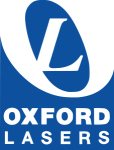Laser Micro Milling
Laser micro milling can be used to selectively remove material from a wide variety of substrates, to form a wide range of blind features from pockets and channels to chamfers and many other 2.5D structures.
Not only can the volumetric removal rate of these features be controlled with the correct choice of laser, but through various processing strategies, very accurate control of the features surface roughness can be obtained.



Laser Milling Specification | ||
|---|---|---|
Minimum width of cut |
Typically 5µm | |
Maximum Material Thickness |
Typically 1mm (dependent upon speed requirements) | |
Materials |
Most materials from soft plastics to hard ceramics including transparent materials | |
Research Literature
Quantification and modeling of mechanical degradation in lithium-ion batteries based on nanoscale imaging
Application: Sample Preparation. https://doi.org/10.1038/s41467-018-04477-1
Fabrication of high quality optical coherence tomography
Application: Optical Coherence Tomography. https://doi.org/10.1117/12.922348
Femtosecond laser induced microstructures on diamond for microfluidic sensing
Application: Microfluidics. https://doi.org/10.1063/1.4811170
Optimization and Characterization of Femtosecond Laser Inscribed In-Fiber Microchannels for Liquid Sensing
Application: Microfluidics. https://publications.aston.ac.uk/id/eprint/26557/1
